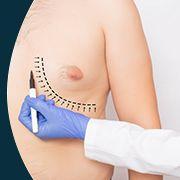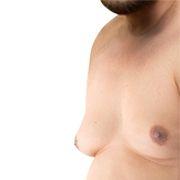Can Exercise Cure Lipoma? Evaluating The Effectiveness
In This Article
Can Exercise Cure Lipoma? Evaluating The Effectiveness
Elena
Updated on March 30, 2024
Medically verified by Dr. Arya
Fact checked by Dr. Pournami

Cosmetic
6 min read
Are you someone who is suffering from lipoma? Are you curious to know more about it?
Lipomas are common benign tumors composed of fatty tissue that can develop anywhere in the body.
While exercise alone cannot cure lipomas, maintaining overall health through regular physical activity can be beneficial.
Let's explore the relationship between exercise and lipomas and how certain exercises can support overall well-being during lipoma management.
What Are Lipomas?
Lipomas are non-cancerous growths composed of fat cells. They often manifest as soft, movable lumps beneath the skin and can develop in areas abundant in fat tissue throughout the body.
While the exact cause of lipomas remains unclear, factors such as genetics, hormonal imbalances, and trauma are thought to contribute to their formation.
Lipomas are typically diagnosed through physical examination and imaging tests, such as ultrasound or MRI.
-
Lipomas are non-cancerous growths made up of fat cells.
-
They typically appear as soft, movable lumps under the skin.
-
Lipomas can develop anywhere on the body where there is fat tissue.
Exercise and Lipoma
Exercise does not directly contribute to curing lipomas.Lipomas are usually not related to lifestyle choices such as exercise.
However, regular exercise is important for maintaining overall health and well-being.
Exercise for Maintaining Good Health During Lipoma Management:
Cardiovascular Exercise
Cardiovascular or aerobic exercise involves activities that elevate the heart rate and increase oxygen consumption over an extended period. These exercises are beneficial for improving cardiovascular health, enhancing endurance, and aiding in weight management.
Engaging in activities such as walking, jogging, cycling, or swimming can help maintain a healthy weight, which may indirectly impact lipoma management.
Aim for at least 150 minutes of moderate-intensity aerobic activity per week to reap the benefits of cardiovascular exercise.
-
Engage in activities like walking, jogging, cycling, or swimming to improve cardiovascular health.
-
Cardiovascular exercise helps maintain a healthy weight, which can indirectly impact lipoma management.
-
Aim for at least 150 minutes of moderate-intensity aerobic activity per week.
Strength Training
Strength training, also known as resistance training, focuses on building muscle strength and size by using resistance.
This type of exercise stimulates muscle growth and can lead to improvements in overall body composition and metabolism. Incorporating exercises such as weightlifting, bodyweight exercises, or resistance band workouts can contribute to enhancing muscle strength and tone.
Aim to include strength training exercises at least two days per week, targeting major muscle groups such as the chest, back, legs, and arms.
-
Incorporate resistance training exercises to build muscle strength and tone.
-
Strength training can improve overall body composition and metabolism.
-
Include exercises such as weightlifting, bodyweight exercises, or using resistance bands.
 9 min read
9 min readThe Advantages of Choosing Mykare Health for Gynecomastia Surgery
 6 min read
6 min readIdentifying The Ideal Age For Gynecomastia Surgery
 6 min read
6 min readPre and Post Gynecomastia Surgery: Essential Things to Know
Get a Callback Now
Flexibility and Stretching
Flexibility exercises involve stretching muscles and increasing joint mobility to improve overall flexibility and range of motion.
Regular stretching can help prevent injuries, improve posture, and promote relaxation and stress relief.
Activities like yoga or Pilates are excellent options for enhancing flexibility while providing relaxation benefits. Practice stretching exercises to improve flexibility and range of motion, focusing on major muscle groups such as the hamstrings, quadriceps, calves, shoulders, and back.
-
Practice stretching exercises to improve flexibility and range of motion.
-
Flexibility exercises can help prevent injury and improve posture.
-
Consider activities like yoga or Pilates to enhance flexibility and relaxation.
Low-Impact Exercises
Low-impact exercises are gentle on the body and minimize stress on joints and bones while still providing cardiovascular and muscular benefits.
These exercises are suitable for individuals with joint issues, older adults, or those recovering from injuries.
Swimming, yoga, or using elliptical machines are examples of low-impact exercises that can be incorporated into a fitness routine.
Choose low-impact exercises to reduce stress on joints and muscles while still maintaining overall health and well-being.
-
Choose low-impact exercises to reduce stress on joints and muscles.
-
Activities like swimming, yoga, or using elliptical machines can be gentle on the body.
-
Low-impact exercises are suitable for individuals with joint or mobility issues.
Lifestyle Factors
In addition to regular exercise, certain lifestyle factors can also contribute to overall well-being during lipoma management. These include: BOX
-
Maintaining a balanced diet rich in fruits, vegetables, lean proteins, and whole grains. A healthy diet can support overall health and well-being while providing essential nutrients for optimal body function.
-
Staying hydrated by drinking an adequate amount of water throughout the day. Proper hydration is essential for supporting various bodily functions, including digestion, circulation, and temperature regulation.
-
Getting enough rest and prioritizing quality sleep to support overall health and recovery. Adequate sleep is crucial for repairing and rejuvenating the body, as well as supporting immune function and cognitive health.
-
Managing stress through relaxation techniques such as meditation, deep breathing, or mindfulness practices. Chronic stress can negatively impact overall health and well-being, so it's important to incorporate stress-reduction strategies into daily life.
Consultation With a Healthcare Professional
While exercise and lifestyle modifications can support overall health during lipoma management, it's essential to consult with a healthcare professional for personalized recommendations.
A healthcare provider can assess individual health status, provide guidance on suitable exercises, and offer tailored advice for managing lipomas effectively.
Additionally, they can monitor the progression of lipomas and recommend further medical intervention if necessary.
Although exercise cannot cure lipomas, incorporating regular physical activity into one's routine is essential for maintaining overall health and well-being.
Cardiovascular exercise, strength training, flexibility exercises, and low-impact activities all play a role in supporting cardiovascular health, muscle strength, flexibility, and overall well-being.
By combining exercise with healthy lifestyle habits and consulting with a healthcare professional, individuals can effectively manage lipomas and promote their overall health and wellness.
By implementing these strategies, individuals can take proactive steps towards managing lipomas while supporting their overall health and well-being.
While lipomas are typically benign and harmless, it's essential to monitor them and seek medical advice if they cause discomfort or concern.
With proper management and a focus on overall health, individuals can live well with lipomas and maintain an active and fulfilling lifestyle.
Lipomas are benign tumors composed of fatty tissue that can develop anywhere in the body.
Exercise alone cannot cure lipomas, but maintaining overall health through physical activity is beneficial.
Lipomas are typically not related to lifestyle choices such as exercise.
Regular exercise is essential for maintaining cardiovascular health, muscle strength, flexibility, and overall well-being.
Cardiovascular exercise, including walking, jogging, cycling, or swimming, improves heart health and aids in weight management.
Strength training builds muscle strength and improves overall body composition and metabolism.
Flexibility exercises, such as yoga or Pilates, improve flexibility, posture, and relaxation.
Low-impact exercises, like swimming or using elliptical machines, are gentle on the body and suitable for individuals with joint issues or injuries.
Lifestyle factors, including a balanced diet, proper hydration, adequate rest, and stress management, contribute to overall well-being during lipoma management.
Consultation with a healthcare professional is essential for personalized recommendations regarding lipoma management and exercise.



